6 things to know about the first space shuttle flight

From 1981: Astronauts reflect on first mission
Space shuttle Columbia's crew shares thoughts and footage from their first flight. Originally reported April 23, 1981 by Max Gomez on WNEW Channel 5 in New York.
CAPE CANAVERAL, Fla. - Back on April 12, 1981, the space shuttle roared to life for the first time. Columbia lifted off from Kennedy Space Center carrying two astronauts – a moonwalker, John Young, and a rookie, Bob Crippen.
Columbia’s two-day mission proved that the space shuttle could safely launch and land. Previously, all orbital spaceflights had been in capsules heaved into space atop rockets and used only once. The shuttle was designed to kick off an era of reusability, increasing reliability while reducing costs.
In many ways, those early hopes for shuttle safety and efficiency never panned out and the fleet was retired in 2011 after the loss of two crews. But STS-1 was a remarkable first flight nonetheless.
Here’s a few things you might not know about the pioneering space shuttle mission.
They nearly didn’t make it
When the shuttle’s two pencil-shaped solid rocket boosters fired up for that first time at noon on April 12, a pressure wave bounced back into Columbia and blasted its body flap – a wing-like extension underneath the main engines – well past the point that its hydraulics should have been damaged.
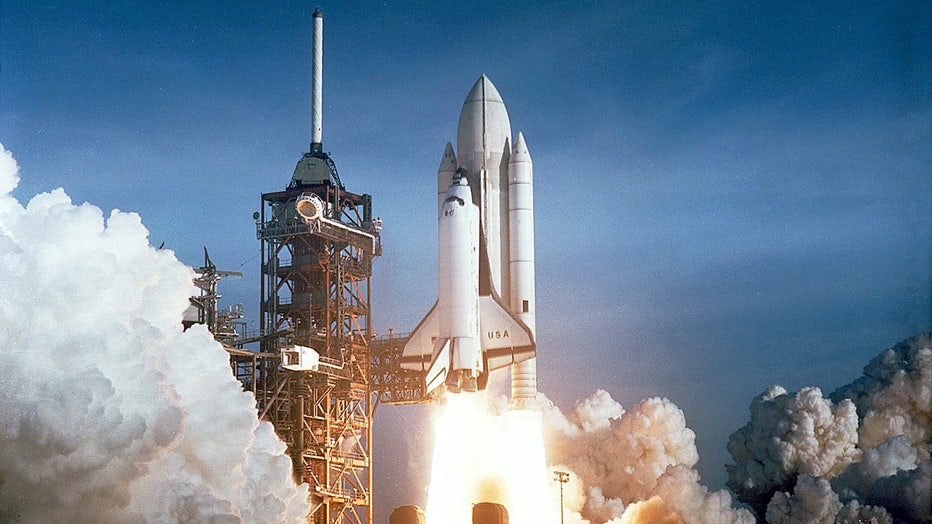
Space shuttle Columbia lifts off for the first time, April 12, 1981 (NASA photo)
No one knew about it at the time, and the flap turned out to be tougher than designed. But John Young later said that if they had known it had been bent so far out of position, the crew would have ejected from Columbia moments after launch because such damage would have made a controlled reentry "extremely difficult if not impossible."
Ejection seats – but why?
Yes, they did have ejection seats on the first flight, but they were only useable for the first 100 seconds of flight.
Even then, many people – including Young himself – questioned the wisdom of ejecting from a rocket as the engines continued to burn. The astronauts would have ejected sideways as the shuttle climbed past them, likely sending them right into the fiery rockets’ plumes.
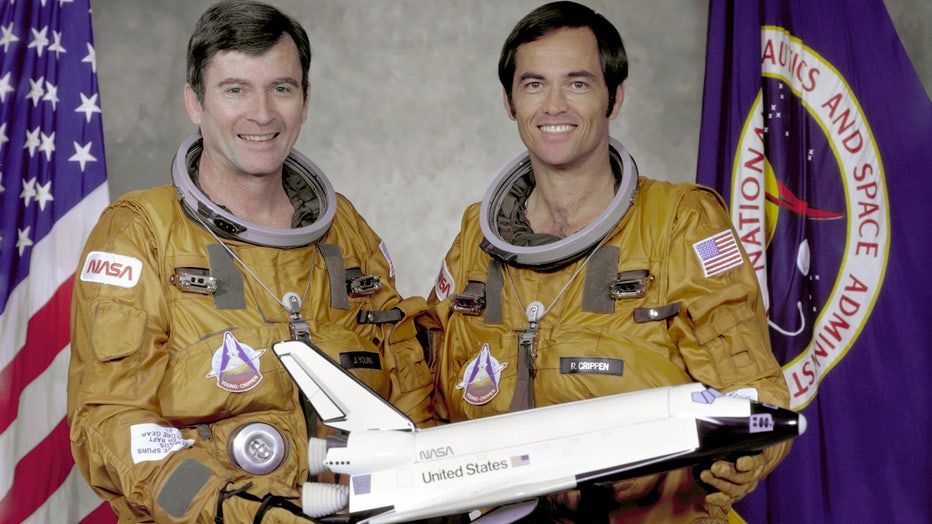
STS-1 crew members: Commander John W. Young and Pilot Robert L. Crippen, taken May 7, 1979 (NASA photo)
"I don’t believe you would [survive]," Crippen later said. "If you popped out and then went down through the fire trail that’s behind the [boosters], that you would have ever survived, or if you did, you wouldn't have a parachute, because it would have been burned up in the process."
Columbia was the only orbiter equipped with ejection seats; the later spacecraft never even had them installed.
The "loaded gun" emergency mode
If one of Columbia’s main engines failed early in the flight, the shuttle would not have had enough power to make it to space. Instead, the crew would have performed a "return to launch site" abort, which is just what it sounds like.
After the boosters separated at the two-minute mark, the shuttle would have turned around and fired its engines in reverse to try and slow down before the orbiter dropped its fuel tank and tried to make an unpowered landing back at Kennedy Space Center. It was a very risky procedure that at least a few experts felt was impossible.

From 1981: Shuttle's first launch
Archived local news video of space shuttle Columbia's first launch. Originally reported April 12, 1981 by Max Gomez on WNEW Channel 5 in New York.
Some NASA planners actually suggested trying the RTLS abort on Columbia’s first mission, but the astronauts killed that idea because, in Young’s words, there was no need to "practice bleeding."
"Let's not practice Russian roulette, because you may have a loaded gun there," he later offered.
Orange is the new white
For the first two flights, the shuttle’s iconic orange external tank – which carried supercold liquid hydrogen and oxygen for the three main engines – was painted white, giving the entire vehicle a uniform appearance. NASA at the time thought the white paint would help keep the tank cooler, but it added 600 pounds of weight.
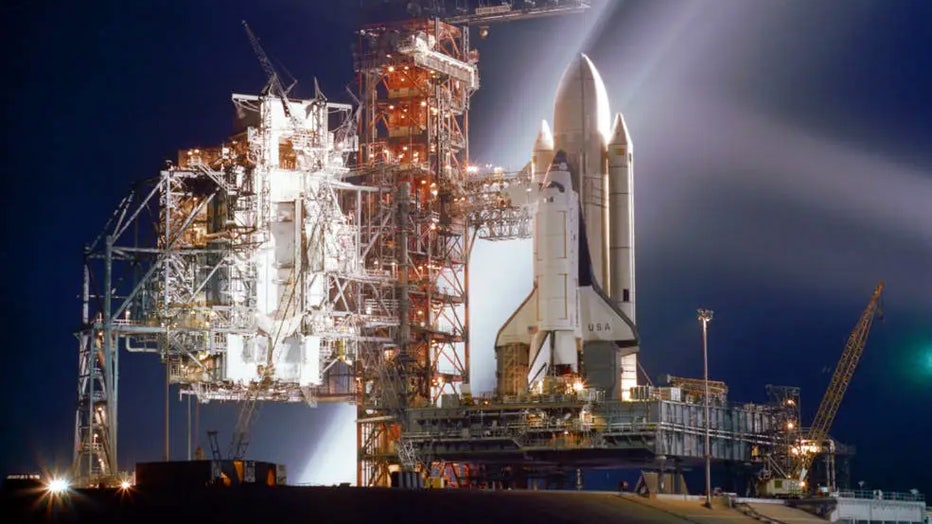
Space shuttle Columbia on Launch Pad 39A at NASA’s Kennedy Space Center in Florida, late March 1981 (NASA photo)
That may not sound like a lot – the shuttle was designed to carry up to 65,000 pounds – but every little bit helps and NASA opted to skip the paint after STS-2 to save weight. That’s how the natural orange color of the tank’s foam insulation soon became a familiar part of the shuttle’s overall look.
Today, NASA’s SLS rockets that carry the Orion capsule still use that same orange insulation.
RELATED: These recycled space shuttle parts are now powering Artemis I to space
Yuri Gagarin’s anniversary
After years of delays, STS-1 was finally scheduled for launch on April 10, 1981. But a computer problem scrubbed that first launch attempt, so NASA tried again – successfully – two days later.
That date is the anniversary of the first human spaceflight ever. Soviet Air Force pilot Yuri Gagarin blasted off in a Vostok capsule from the USSR’s Baikonur Cosmodrome on April 12, 1961. The 27-year-old completed one orbit of the earth.
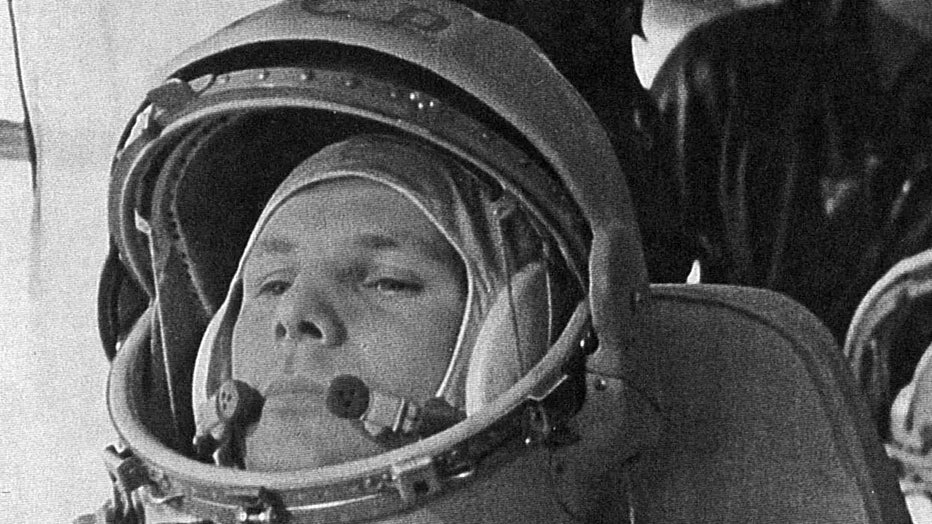
On April 12, 1961, the era of human spaceflight began when the Cosmonaut Yuri Gagarin became the first human to orbit the Earth in his Vostok I spacecraft (Image via NASA)
In the span of 20 years, humans had gone from rudimentary capsules to reusable spaceplanes, but Gagarin did not live to see the advancement. He died in a plane crash in 1968.
"Yuri’s Night" is celebrated on April 12 as a commemoration of milestones in space exploration.
"Touchdown"
While the space shuttle orbiter had three main rocket engines and two smaller orbital engines, it had no air-breathing jets. So after it reentered the atmosphere, it glided in for an unpowered landing.
The astronauts had no way to go around and try again if something happened during the descent, so large runways were required to give them a safety cushion. For the first shuttle flights, that meant landing at Edwards Air Force Base in California, a giant dry lakebed favored by test pilots.
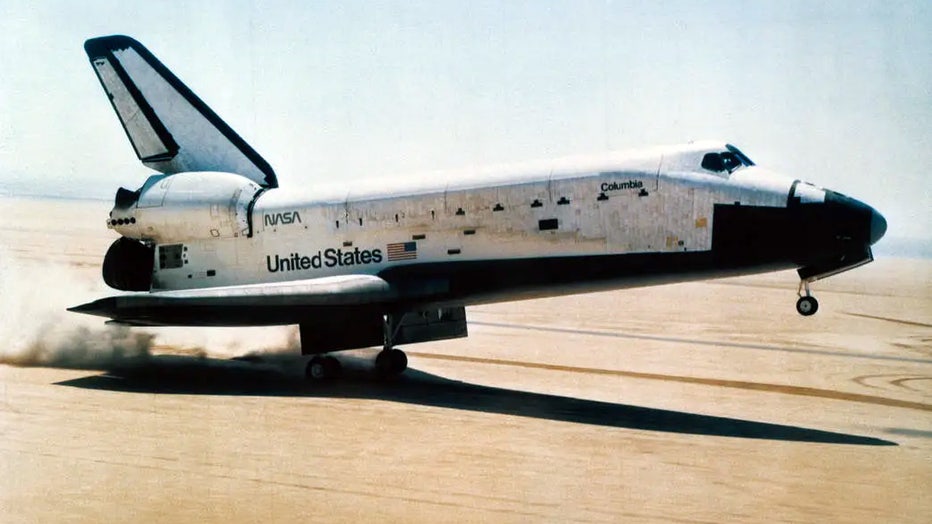
The rear wheels of space shuttle Columbia touch down on Rogers dry lake at Edwards Air Force Base, NASA's Armstrong Flight Research Center (then Dryden), California (NASA photo)
When Commander John Young eased Columbia down on the runway on April 14, it was the first "touchdown" call for NASA – every previous returning astronaut returned to Earth in a capsule that parachuted into the ocean.
"What a way to come to California!" pilot Bob Crippen exclaimed.

